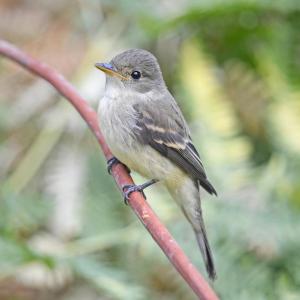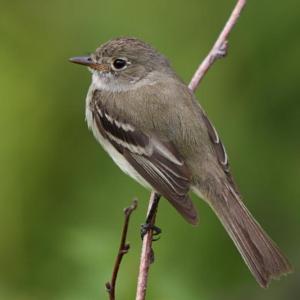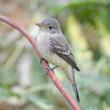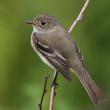When Two Bird Species Masquerade as One
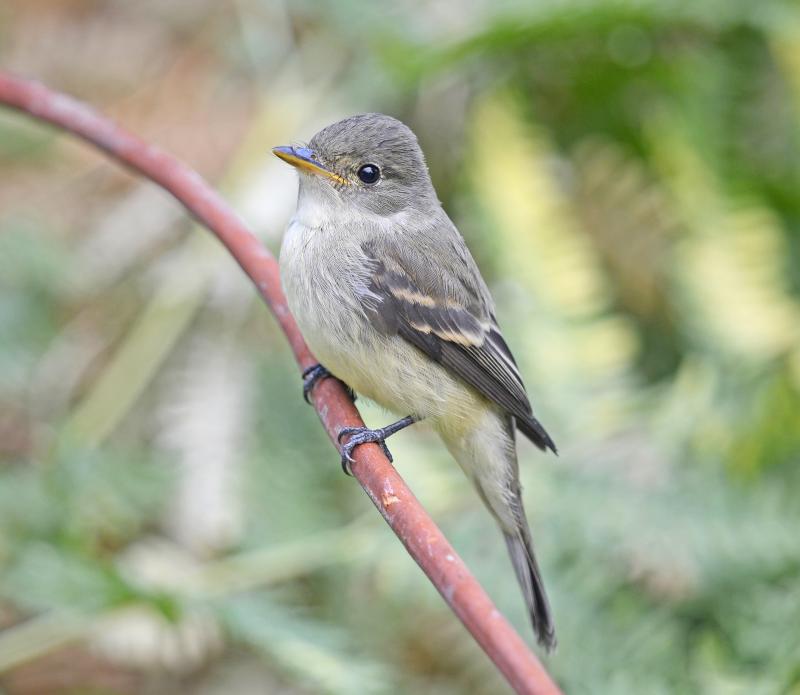 The willow flycatcher looks remarkably similar to the alder flycatcher but its snappy "fitz-bew" song is very different from the song of the alder flycatcher. Photo by VJAnderson courtesy of Wikimedia Commons.
The willow flycatcher looks remarkably similar to the alder flycatcher but its snappy "fitz-bew" song is very different from the song of the alder flycatcher. Photo by VJAnderson courtesy of Wikimedia Commons.
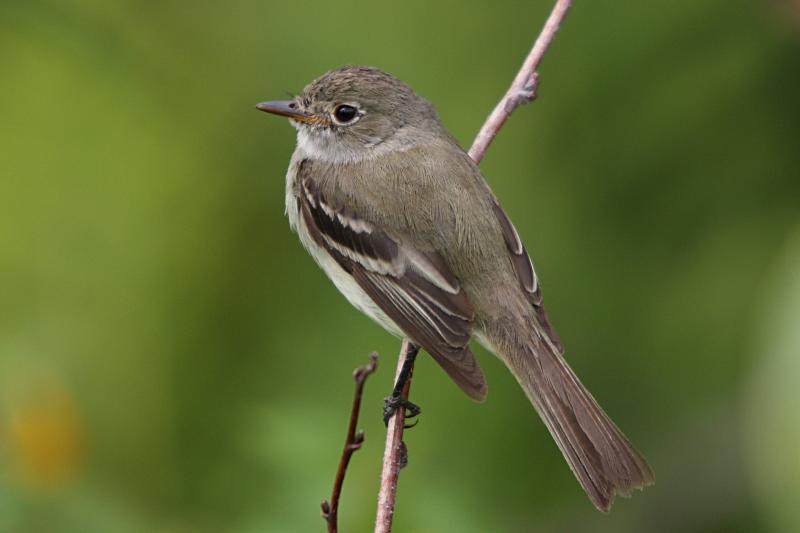 The alder flycatcher (shown here) and willow flycatcher look virtually identical but the alder flycatcher occurs across northern Canada while the willow flycatcher occurs mostly in the U.S. Photo by Cephas courtesy of Wikimedia Commons.
The alder flycatcher (shown here) and willow flycatcher look virtually identical but the alder flycatcher occurs across northern Canada while the willow flycatcher occurs mostly in the U.S. Photo by Cephas courtesy of Wikimedia Commons.
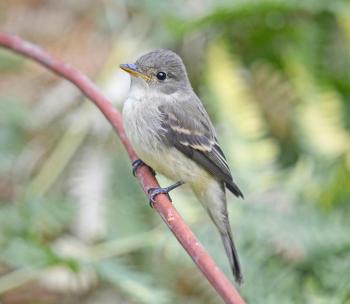 The willow flycatcher looks remarkably similar to the alder flycatcher but its snappy "fitz-bew" song is very different from the song of the alder flycatcher. Photo by VJAnderson courtesy of Wikimedia Commons.
The willow flycatcher looks remarkably similar to the alder flycatcher but its snappy "fitz-bew" song is very different from the song of the alder flycatcher. Photo by VJAnderson courtesy of Wikimedia Commons.
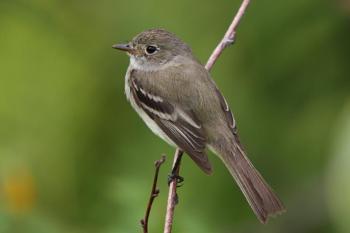 The alder flycatcher (shown here) and willow flycatcher look virtually identical but the alder flycatcher occurs across northern Canada while the willow flycatcher occurs mostly in the U.S. Photo by Cephas courtesy of Wikimedia Commons.
The alder flycatcher (shown here) and willow flycatcher look virtually identical but the alder flycatcher occurs across northern Canada while the willow flycatcher occurs mostly in the U.S. Photo by Cephas courtesy of Wikimedia Commons.
Imagine a theoretical case in which two bird species looked exactly alike.
Your first question would probably be, “How would anyone know that they are different species?”
Your second question might be, “How would the two bird species tell each other apart in the first place?”
There are indeed some species that look so similar that their identities as separate species went undetected for decades. In fact, there are undoubtedly still some of these so-called cryptic species that are undescribed even today.
One of the most famous examples among birders are the flycatchers of the genus Empidonax. These insect-eating birds, roughly half to a third the size of a robin, are all rather drab gray-green with two white wing bars and a varying amount of white (or whitish-yellow) around the eye. The plumage differences among them are frustratingly subtle sometimes involving things like the length of the wingtip and the amount of pink on the base of the lower mandible. There are 15 described species in the Empidonax genus. They breed in North America and Central America, and some migrate south to winter in South America.
Particularly hard to tell apart by sight are the sibling species, the alder flycatcher and the willow flycatcher. They are so hard to tell apart by sight (even the museum specimens!) that they were considered the same species, then called the “Traill’s flycatcher,” until 1973. The “Traill’s flycatcher” was known to have two different song types for a considerable time. But it took until 1973 for scientists to untangle the fact that these song types were not variants within a single species but rather songs of two distinct species that have never been documented to interbreed.
The willow flycatcher sings a song that sounds like a sneezy “fitz-bew” while the alder’s song is a rolling “ree-bee-o.” The willow flycatcher breeds across the northern two-thirds of the U.S. and just barely into some parts of southern Canada. The alder flycatcher, in contrast, nests across much of Canada and Alaska south of the Arctic but makes its way into the northeastern U.S., occurring patchily south at higher elevations in the Appalachians, even to western North Carolina.
Here in Maine, willow flycatchers have spread northward and become more widespread over the last 40 years. Alder flycatchers are still widespread across most of the state. On the Boothbay peninsula, alder flycatchers remain more common than willow flycatchers.
In cryptic species pairs like this, the birds use the songs to differentiate each other just as birders use the songs to identify them. In Central and South America and the Caribbean, there is another genus of flycatchers called the Elaenias, with 21 described species that are similarly look alike and notoriously difficult to identify. It’s possible that there may even be a cryptic species or two “hiding” out within one or more of the currently described Elaenia species, just waiting for a curious bird detective to track it down.
Jeffrey V. Wells, Ph.D., is a Fellow of the Cornell Lab of Ornithology and Vice President of Boreal Conservation for National Audubon. Dr. Wells is one of the nation's leading bird experts and conservation biologists and author of the “Birder’s Conservation Handbook.” His grandfather, the late John Chase, was a columnist for the Boothbay Register for many years. Allison Childs Wells, formerly of the Cornell Lab of Ornithology, is a senior director at the Natural Resources Council of Maine, a nonprofit membership organization working statewide to protect the nature of Maine. Both are widely published natural history writers and are the authors of the popular books, “Maine’s Favorite Birds” (Tilbury House) and “Birds of Aruba, Bonaire, and Curaçao: A Site and Field Guide,” (Cornell University Press).

